Reading
“Once you learn to read, you will be forever free.”
Frederick Douglass
Our Intent
We aim to develop the children, staff and parents as reading experts to ensure every child at The Cambridge develops a love of reading. They learn to read skilfully and learn to read as quickly as possible.
The reading experts at The Cambridge Primary School have a shared understanding that reading is an essential skill for everyone. Reading is for enjoyment and for learning. We strive to create a reading culture where reading is prioritised and at the heart of everything we do. A whole school approach that combines both reading pleasure and achievement for all.
At the Cambridge Primary School, we intend:
- for every child to be a reader
- for early readers to have the skills to decode words, so they can read fluently as quickly as possible
- for children to understand what they have read
- for children to respond with curiosity about what they and others have read
- for children to become enthusiastic and motivated to read for pleasure
- to develop children’s confidence in reading a wide variety of genres and text types
- to develop children’s knowledge of a wide range of authors and illustrators
Our Implementation
When are children taught to read, practise their reading skills and develop reading for pleasure?
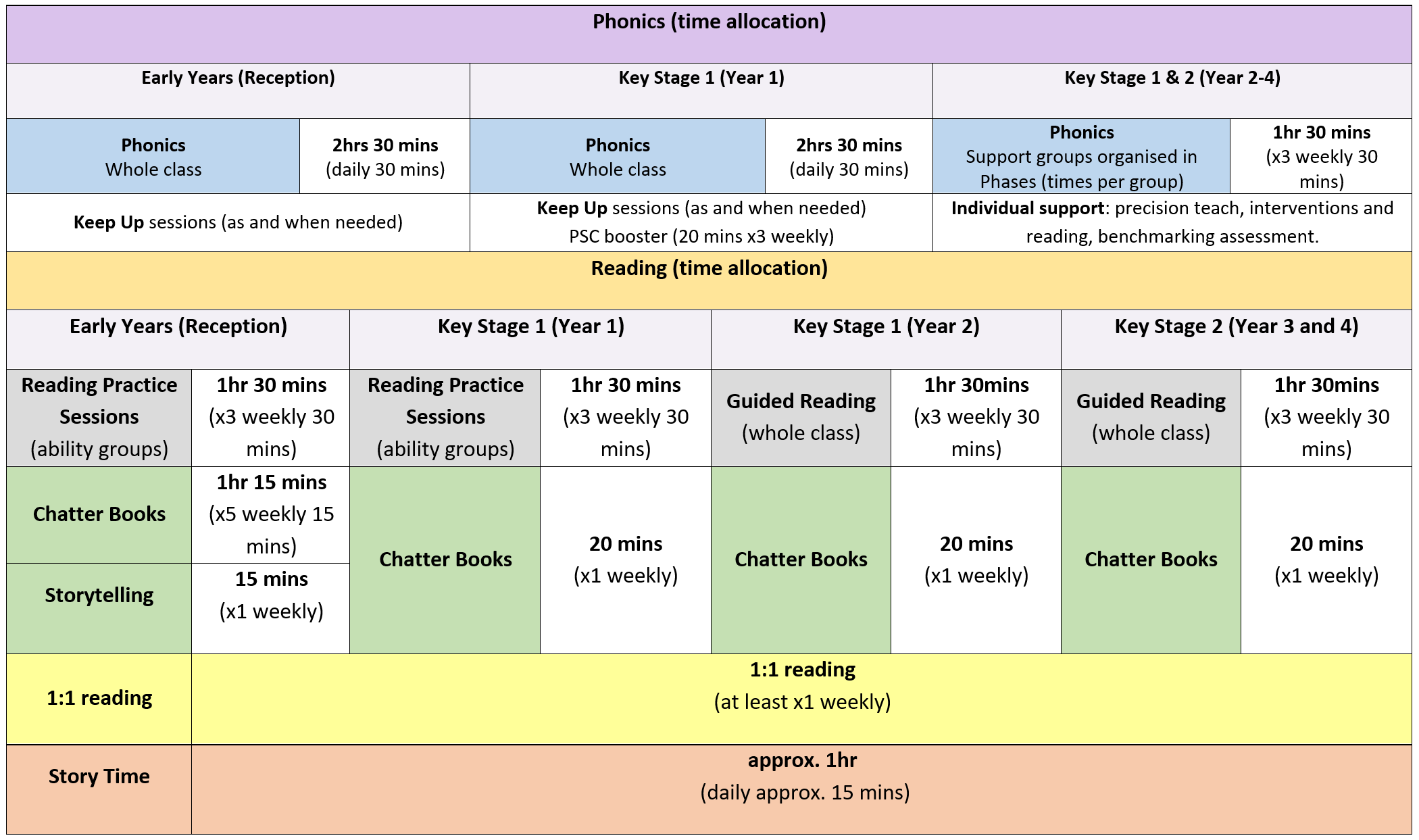
- Daily phonics lessons in Lower School - we follow the 'Little Wandle Letters and Sounds Revised' Programme because it is a systematic, synthetic approach, which is recommended as the most effective way for children to learn to read. Phonics learning is revisited throughout the day and connected to all curriculum areas, with the aim for all children to make rapid progress, so they become fluent readers as quickly as possible. During lessons, children are identified to participate in daily 'keep up' sessions for extra practise.
- 1:1 reading with adults - All children read at least once a week to a teacher or LSA. They read their Phonic Reader book that is decodable and matched to their secure phonic knowledge. This ensures they decode using their phonic knowledge and not by any other strategy.
- Reading Practice Sessions - children read in small groups, 3 times a week. They read the same book in each session with a specific focus on the skills of decoding, prosody and comprehension. The book is decodable and matched to their secure phonic knowledge. The same book is read at home throughout the week.
- Guided Reading - children are taught as a class. The lessons are planned to explicitly teach the comprehension requirements of the National Curriculum using rich fiction, non-fiction, poetry and sometimes film clips for inspiration. Aspects of comprehension studied include sequencing, retrieval, vocabulary, explanation, prediction and inference which the children recall using engaging dog characters in Lower School and snake characters in Upper School. Lessons involve the children working collaboratively to actively investigate text and record their learning in whole class Reading Journals.
- Chatter Books - children take ownership of the session under the guidance of the class teacher, participating in informal book talk activities such as recommending texts, drama and exploring authors and illustrators. The aim of the lesson is to foster an intrinsic love of reading whilst enhancing teacher knowledge of children's reading practices and preferences, so they can develop children's 'reading diets'.
- Storytelling - children in Reception create their own stories. With the lights dimmed, and a roaring fire displayed on the interactive whiteboard, the children tell their own stories that are written in the class story book. They are then acted out and brought to life in the classroom. The imaginative stories are usually based on favourite stories and characters.
- Story Time - children are read aloud to on a daily basis in every year group. This is for the children's enjoyment with the main aim of motivating them to read for pleasure. Additionally, it develops their knowledge and confidence to discuss a wide range of authors, illustrators, text types and genres. The children engage with the story as they are encouraged to participate. In Reception, the children enjoy performing actions and joining in with repeated phrases as they listen to their favourite (and new) stories again and again. Active learning is also seen in Key Stage 1 and 2, where challenges are set during this time. These might include visualising the setting by drawing what they can imagine it looks like as the teacher reads, performing a 'freeze-frame' of an event in a chapter for a partner to guess, drawing a mood graph to show how a character feels throughout a chapter or recording words such as exciting adjectives that they would like to try and use in their writing.
- Home learning - parents are expected to hear their child read daily even when they are fluent readers. There is guidance for parents in the Reading Records and weekly letters. Parents are encouraged to record all reading experiences in the Reading Record which are counted towards the half-term reading challenges.
- English lessons - planning is linked, inspired and supported by high quality, engaging and relevant texts. Stories form the basis for weekly continuous provision in Reception and an English teaching sequence in Key Stage 1 and 2; leading to daily discussion about the text.
- A range of regular events to engage pupils with the joy and wonder of a wide range of text types, so they are confident, enthused and motivated to read for pleasure. Events include weekly virtual bedtime stories, Book Buddies, Mystery Readers, Book Week and reading challenges.
- A supportive learning environment with book corners in every classroom, so children have access to engaging books. We are developing our main library of topic books, so they can be available to support the children’s interests and topic learning.
What books do children read, listen to and study?
- Phonics Readers - these are fully decodable books from a range of reading schemes to introduce a wide variety of literature. They are organised in groups (book boxes) that match the teaching sequence of the 'Little Wandle Letters and Sounds Revised' programme. They are matched to a child's secure phonic knowledge, with the aim they can be read with 90% accuracy. This ensures children are reading with good fluency, comprehension and decode the words by sounding out and blending, and not by using any other strategy (e.g. the pictures). A child will keep their ‘Phonics Reader’ for a week with the intention of reading it daily to develop fluency and pace as recommended in the National Curriculum.
- Family Readers - are aimed at developing and inspiring a love of reading through the shared experience of reading together. These books contain sounds and tricky words that do not match those the children are currently learning, so they are not expected to be able to decode them. The ‘Family Reader’ can be changed daily. Children can also read books from home or the library as a family reader.
- The Cambridge Reading Spine - we are developing a reading spine which consists of books from a range of genres and authors, that we believe the children should be exposed to during their time at The Cambridge. We have started by linking texts to our topics and creating a Reading Journal for each year group. The children will listen to and discuss these books during Story Time, English and Guided Reading lessons.
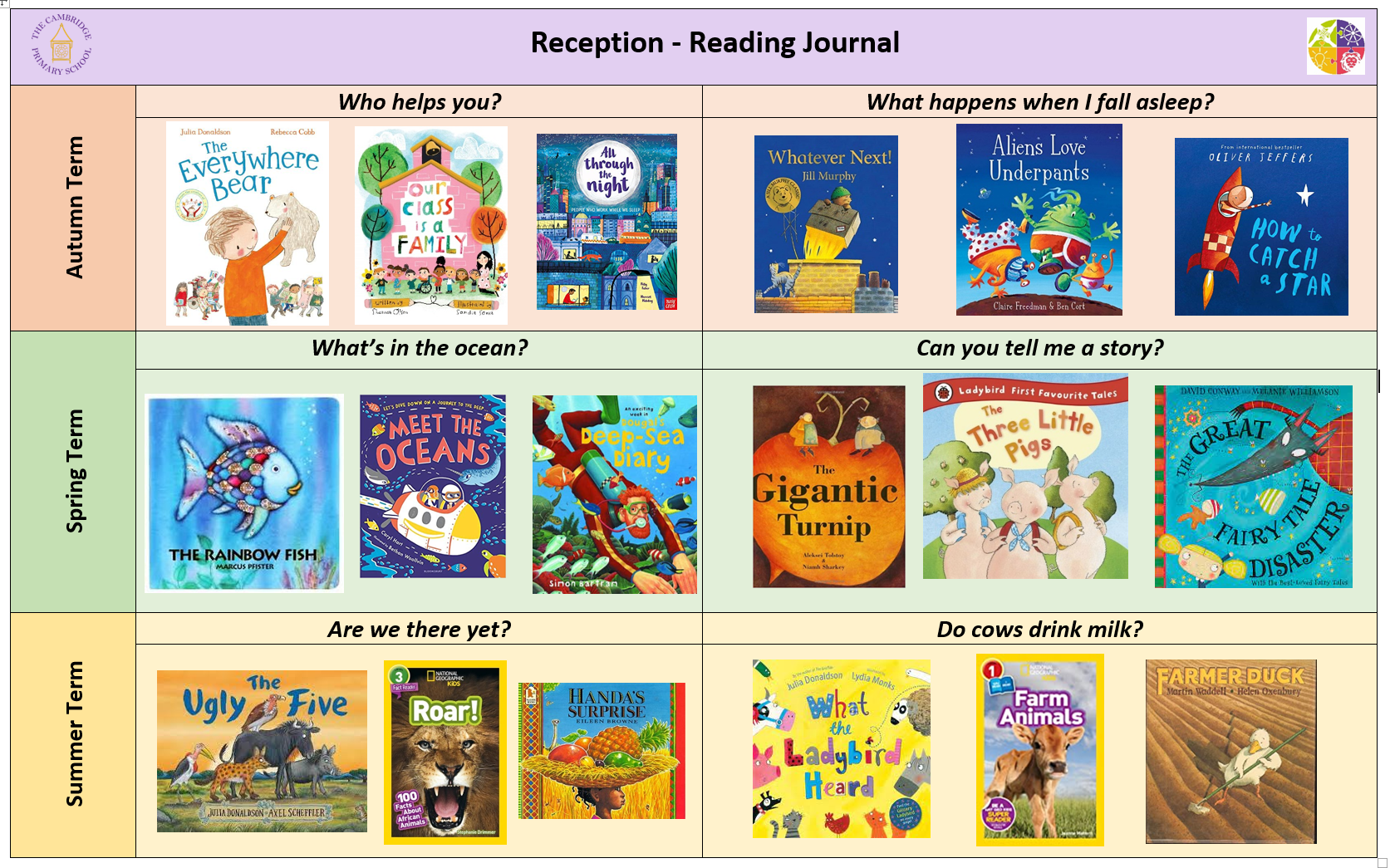
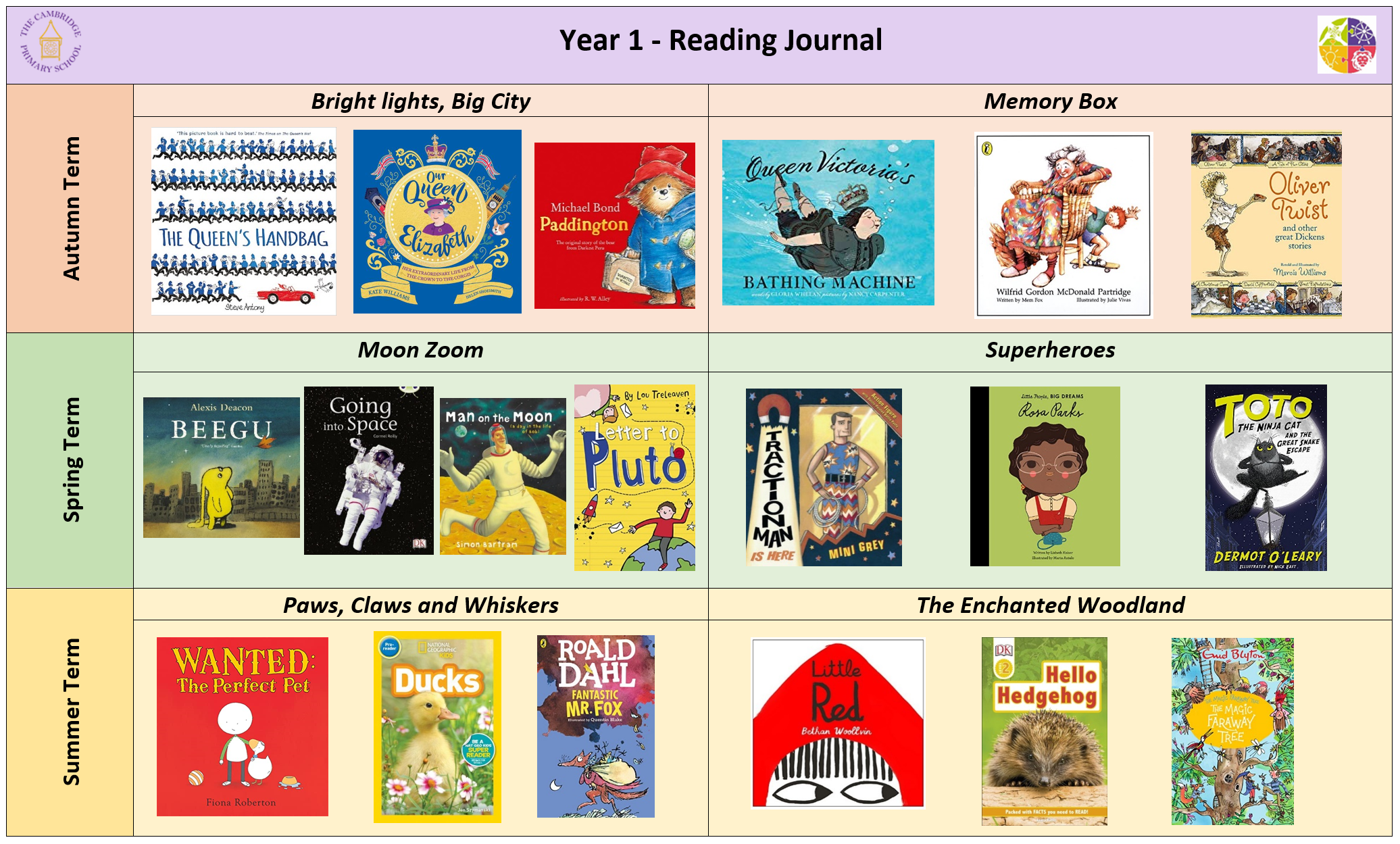
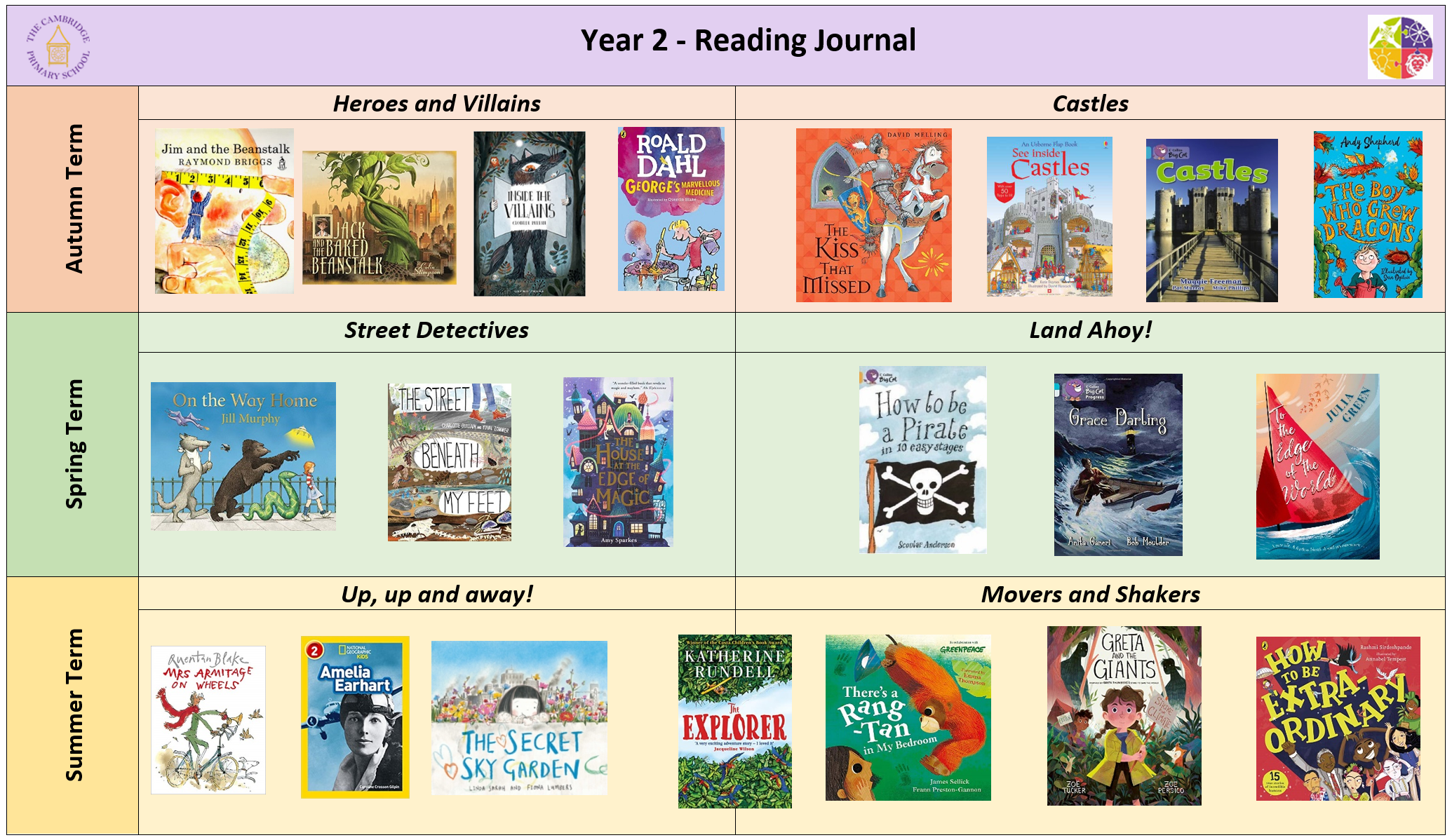
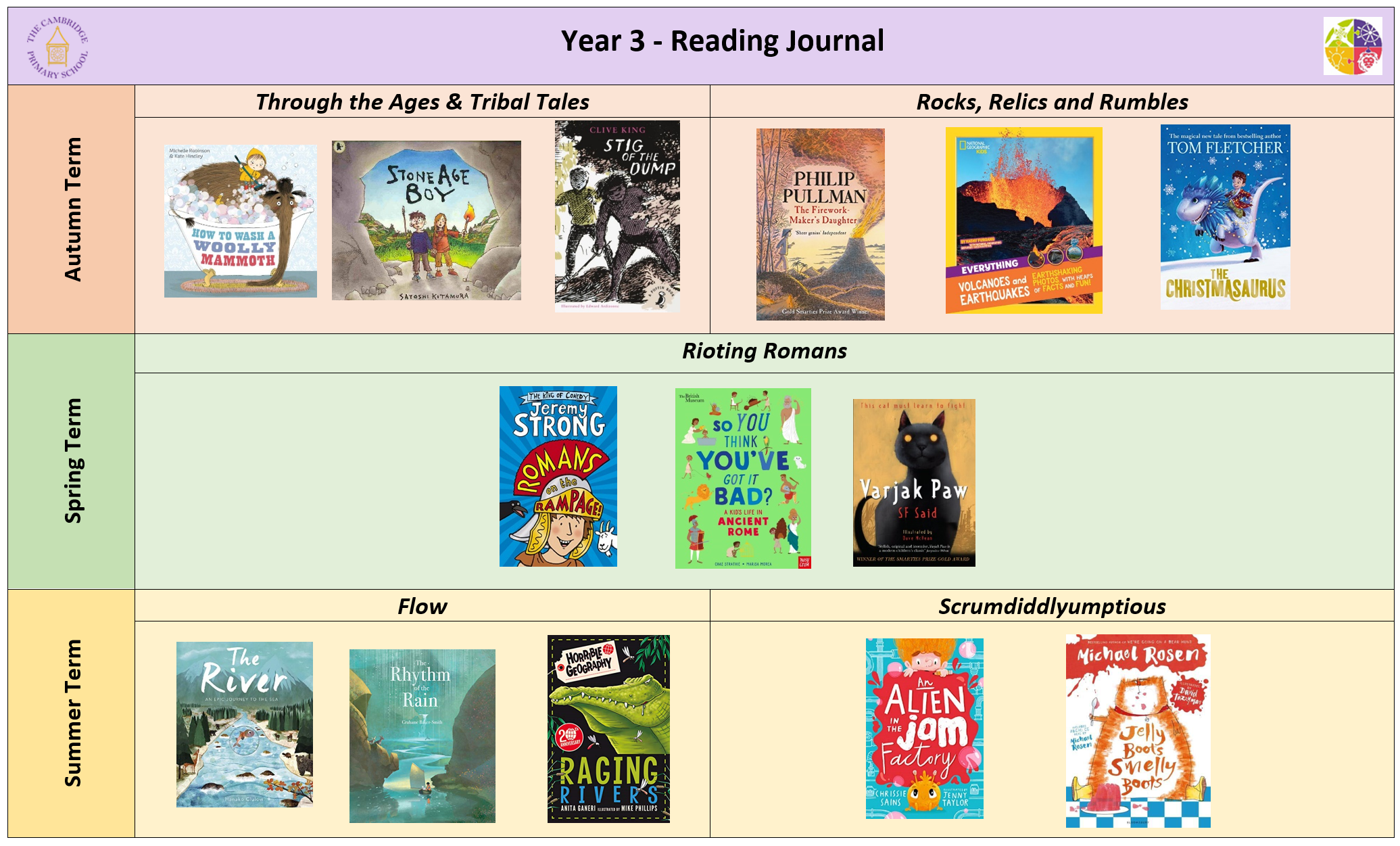
How do children progress through the reading system?
To move to the next book box, children must be able to blend words and recognise high-frequency words in the book box and within their phonic phase. The child should be reading with good fluency and decode with 90-95% accuracy. They should be able to retell the main points they have read and answer simple literal retrieval questions. This is based on teacher judgement and supported by ongoing assessment.
How do we assess reading?
We build a picture of a child’s reading behaviours, including their views on reading, by gathering evidence from:
- Phonics, reading practice sessions and guided reading lessons
- 1:1 reading
- Running Record Assessments
- Reading Comprehension Assessment papers
- Reading events
YR-children are assessed against the reading statements in the Birth to Five Matters document.
KS1 and KS2-children are assessed using the National Curriculum objectives.
What support and information do parents receive?
A Cambridge pupil's reading journey begins even before the children start school! As part of their transition into school, the children listen to stories with their new class teacher in small groups on Moving up Day. They are invited to a series of virtual bedtime stories told by the Reception staff and key adults in the school during the summer term. Each child receives a Summer Reading Diary to note any reading they enjoy during the summer. This helps the teachers understand what stories and books the children like and sets an expectation that reading is a priority at The Cambridge.
When starting school, parents of children in Lower School, receive a reading booklet and reading record with information on supporting early reading development. The booklet also includes questions to support the development of comprehension skills linked to the reading dog characters. The Upper School reading record includes helpful information and questions to support comprehension skills linked to the snake characters.
There is further information for supporting reading in the Phonics and the Supporting Reading at Home areas of this website including information on the 'Little Wandle Letters and Sounds Revised' phonic progression, how to say the sounds and Home Reading Cue Cards and Bookmarks.
There is a Phonics and Reading Workshop 2022 which is available to view. It explains what phonics is and how parents can support their child, in addition to ideas for activities at home.
Every week, parents in Reception receive a home learning letter containing focus sounds and words from the week’s learning with suggested games and activities to embed them.
